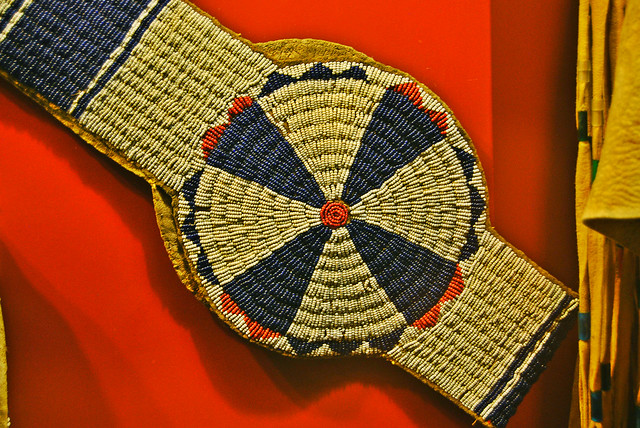Retired educator Bill Anderson spoke to a packed room at the English Valley History Center on Sunday, June 22, 2014. His topic was In Search of Ancient Americans and dealt with native tribes of southeast Iowa. Bill's opening remarks focused on his experiences as a middle school social studies educator and administrator.
Half jokingly Bill told the audience that there are four things that he would never do again if given a chance. Those being not to substitute teach, be a principal, officiate sports or drive a bus of kids.
Bill, who has a deep love of history and archeology has researched and collected items around North English and southeast Iowa for decades. He displayed an extensive collection of artifacts for his one hour presentation to demonstrate tools used for hunting and cooking. Bill's interest is to find evidence of ancient human existence and try to determine how those people lived.
While it is commonly believed that the Bering Strait land bridge allowed people to migrate from Asia to the Americas, Bill's talk focused on the period of European contact within Iowa. He explained that the Ice Age retreat of the glaciers probably led to conditions where mammoth kills took place. Currently there is an active dig of a mammoth herd near Ottumwa, Iowa. A search for a human connection to this site continues.
Bill showed examples of tools used by native cultures including arrowheads, mulls, axes, atlatls, plumb bob, game rock and fire crack rocks.
In Iowa Bill said there are 26,000 known native archeological sites, 348 sites alone in Iowa County. The state's archeological office estimates there are up to two million sites in Iowa. His talk in front of roughly 50 people also covered a summary sketch of Chiefs Wapello and Keokuk of Iowa plus Sauk & Fox warrior, Black Hawk, who to the surprise of many, was not a chief. All three leaders were present in the North English area from time to time.
"We need to teach more of the heritage of Iowa from all societies in our schools today," said Bill. "We can learn much more from them."
Bill, who has a deep love of history and archeology has researched and collected items around North English and southeast Iowa for decades. He displayed an extensive collection of artifacts for his one hour presentation to demonstrate tools used for hunting and cooking. Bill's interest is to find evidence of ancient human existence and try to determine how those people lived.
While it is commonly believed that the Bering Strait land bridge allowed people to migrate from Asia to the Americas, Bill's talk focused on the period of European contact within Iowa. He explained that the Ice Age retreat of the glaciers probably led to conditions where mammoth kills took place. Currently there is an active dig of a mammoth herd near Ottumwa, Iowa. A search for a human connection to this site continues.
Bill showed examples of tools used by native cultures including arrowheads, mulls, axes, atlatls, plumb bob, game rock and fire crack rocks.
In Iowa Bill said there are 26,000 known native archeological sites, 348 sites alone in Iowa County. The state's archeological office estimates there are up to two million sites in Iowa. His talk in front of roughly 50 people also covered a summary sketch of Chiefs Wapello and Keokuk of Iowa plus Sauk & Fox warrior, Black Hawk, who to the surprise of many, was not a chief. All three leaders were present in the North English area from time to time.
"We need to teach more of the heritage of Iowa from all societies in our schools today," said Bill. "We can learn much more from them."




